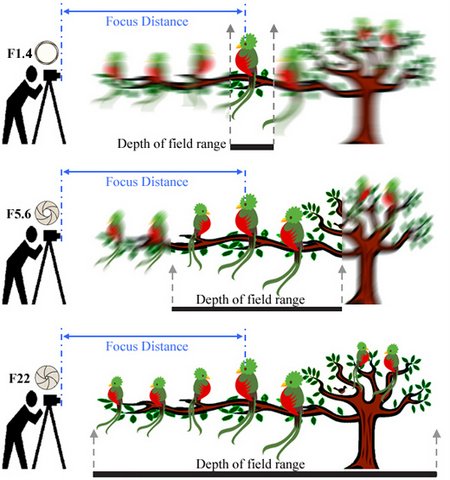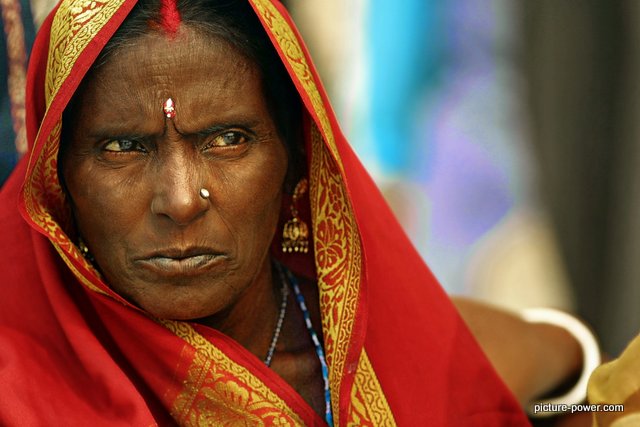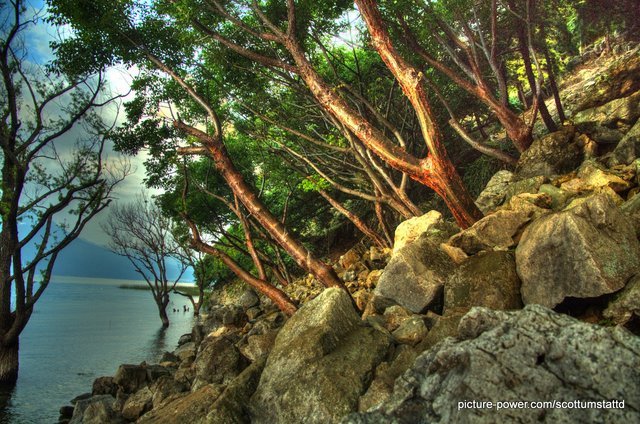Digital Photography Terms
Depth of Field
What is in-focus in your pictures? What is out of focus?
Depth of Field (DOF) refers to the area of your picture that is in focus. The word depth is used because your lens’ aperture setting determines what measure of distance within your picture is in focus.
A picture can speak a thousand words. Which is why I like photography; I am able to conserve my words. The image below from Augustine's Notebook demonstrates the concept of DOF pretty well.

How To Control Depth of Field
The depth of focus in your pictures is determined by three factors. One is your lens’ focal length. Another is your lens’ aperture setting. Finally, your distance from the closest thing and farthest thing that we see in your picture plays a role.
Lens Focal Length
Zoom lenses can create shallower DOF than wide angle lenses.
The more you zoom in (either through use of a lens that zooms or by using fixed-focal length lenses) the more the area within your composition is compressed. Increasing zoom length helps to blur the background.
The more the background is blurred the more your subject (say, a model) stands out.
The picture above was taken with a Canon 200mm f/2.8L lens.
The long 200mm focal length helps to compress the background which makes the subject, in this case an Indian woman, stand out because there is nothing to distract the viewer's eye from what is most important in the picture.
Lens Aperture
If you’ve found the right focal length but still want to play with your depth of field you can adjust the f/stop setting on your lens.
A wide aperture (lowest f/stop) will let in more light and will create a more shallow (or thin) DOF. A narrow (highest f/stop) blocks out more light and will create a deeper (thicker) DOF.
Using a low f/stop (wide/open aperture) blurs the background and can be used in portrait photography to make your subject stand out.
In the picture above you can really see how your aperture setting affects what is in focus within your DOF. Wide aperture settings (low f/stop) will help to seperate your subject from the background.
When you use a narrow aperture (higher f/stop) you force more stuff to be in focus.
Use your aperture setting to control what you want your viewer to pay attention to. The picture above was taken with a Canon 50mm f/1.8II lens on a Canon 60D.
The Placement of Things Near and Far
The distance between you and the objects in your picture will also play a role in how you can use depth of field.
The closer you are to your subject the easier it becomes to blur the background. For example, a macro lens, like the Canon 100mm f/2.8L USM, allows you to get very close to your subject. It then becomes easy to blur what is behind say, a butterfly.
When you are far away from your subject, like in landscape photography, it becomes very difficult to create focal diffusion. This means that in landscape photography more, if not all, items are in focus.
A Canon extension tube was used with a Canon 15-85mm f/3.5-5.6 IS USM lens in the picture above.
The extension tube gives almost any lens the ability to shoot macro (close up). I was a few inches away from the butterfly in this shot. That close distance created a shallower DOF that allowed for the head of the butterfly to be in focus and the rear of it to be out of focus.
In contrast, the landscape picture below (which covers about 3 miles) shows everything in relative focus. The greater the distance between you and your subject the harder it will be to create a background blur.
Applying Depth of Field
A shallow DOF (where only a thin slice of your picture is in focus) works very well in portrait photography. It is also beneficial in sports photography and documentary photography. A shallow depth of field allows you to highlight (through focusing) the most important part(s) of your picture.
A wider DOF (where a thicker slice of your picture is in focus) works well in architectural, street and landscape photography. For example in architectural photography you may want to photograph an entire room. Using a higher f/stop (narrow aperture) will allow for everything in the room to be in focus rather than just the elements in the foreground, background or middle.
How you use depth of field will play a critical role in what your picture communicates. If you are using a low f/stop (open aperture) you can show your viewer something specific by focusing on one thing and blurring out everything else.
You can also show your viewer that everything within your composition is important by using a high f/stop (narrow aperture). This will help to ensure that things in the foreground and background are given equal focus measure.
Video Tip
Here's a straight forward video from Canon that explains things well.
Is This Making Sense?
Depth of field can be a hard photography term to write about without being very lengthy and over explaining. Probably the best way to figure out what depth of field means and how you can use it is to use the graphic at the top of the page. And of course, practice. Put these ideas into action and see for yourself.
















